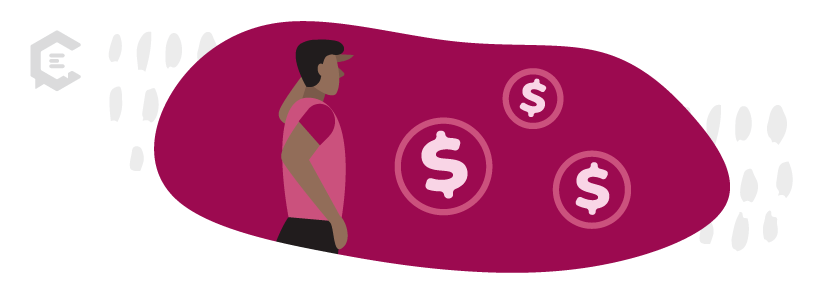What is the Ambiguity Effect? The Ambiguity Effect is a cognitive bias that occurs when people avoid products or services they consider that are ambiguous or missing information they need to make a decision — because they dislike uncertainty.
All of us like to feel the ripeness of a cantaloupe or smell it for sweetness before we buy one. That in-store experience of touching and smelling fresh produce has long been holding people back from purchasing fresh food online — until now.
Infusing Trust into E-Commerce to Fight the Ambiguity Effect
The pandemic has shifted online shopping behaviors, and signs show these trends could have staying power. According to an October 2020 Nielsen Global E-Commerce Syndicated Study:
- A third of global shoppers (of some 30,000 surveyed) claimed to be new to e-commerce in 2020.
- Approximately 50-60 percent of U.S. shoppers surveyed made their first e-commerce purchase between March and October 2020.
- About 70 percent of these shoppers have already made repeat purchases within an online channel.
“There’s an opportunity to infuse trust and credibility into e-commerce, whether that be through tactical features of the payment process or through experiential elements that can enlighten shoppers on their product’s origin or journey,” said Lauren Fernandes, director of Nielsen’s Intelligence Unit. “It could be as simple as information on how safely their products are packaged or what local establishment may be supported through their purchase.”
Why the Ambiguity Effect Should Matter to Marketers
Whether infusing more trust into the e-commerce ecosystem as a whole or building trust in a brand, marketing content creators should take some time to understand the Ambiguity Effect, a cognitive bias that occurs when people avoid products or services they consider that are ambiguous or missing information they need to make a decision — because they dislike uncertainty.
This blog series aims to dive into the findings of different cognitive biases, so you, as marketing and content creators, can create nuanced marketing materials based on evidence-based consumer psychology.
Undoubtedly, the global pandemic has created a lot of ambiguity as people manage the myriad of safety risks of going into stores and trying to maintain social distances. In a similar vein, first-time online consumers are also negotiating the ambiguity of online e-commerce marketing.
How can your ad campaigns, website, and other materials help consumers in making online purchasing decisions by reducing the Ambiguity Effect?
Key Aspects of the Ambiguity Effect
- The Ambiguity Effect happens when a person given two viable options doesn’t give consideration to both equally. Instead, they might perceive one option as too risky, and therefore put their trust in the one they know.
- This might mean that they eliminate what might be good (or even better) choices for products and services merely because they don’t know the brand or haven’t used the service.
- Researchers believe it happens because consumers want quick, effortless decision-making and problem-solving. They want to reach a conclusion quickly, regardless of whether that conclusion is inaccurate or misinformed.
6 Content Tips to Help Consumers Overcome the Ambiguity Effect
1. Relevant information is a competitive edge.
If you and a competitor have similar products, make sure that every bit of information they provide, you also provide, and then some. People like to feel well-informed about options, and if something is left ambiguous, that shadow of doubt will linger as they make their purchase.
Leave little to the imagination when it comes to product information or the flow of services: That means detailing your fees, delivery estimates, and what comes with your pricing options.
2. Honesty in your marketing is the best policy.
Transparency and honesty should be at the core of your modern, multi-faceted marketing strategy that attempts to make a personal connection with the consumer.
Here’s an example of guidelines set by Kickstarter.com for their creators:
“The language you choose to present your project plays a critical role in setting expectations for backers. Your project description should give backers a realistic and accurate picture of what you’ve done so far, what stage of development you’re in now, and what you’re hoping to create with their support. Leaning on cheap marketing language to make your project appealing at the outset won’t do you any favors in the long run if your project isn’t able to meet the unrealistic expectations you set for your backers.”
3. Real online reviews to help seal the deal.
Seven in 10 global shoppers surveyed by Nielsen’s study say they prefer online retailers that have product reviews. You want to make sure your reviews are from verified shoppers because it helps to get information from someone who has tried on the jacket, played with the product, or has explained their reasons why they decided the product wasn’t for them.
More importantly, consumers (nearly 50 percent of those surveyed) are willing to switch to a different online retailer if the retailer delivers a fake/faulty product or has a higher price. You can safeguard against that by clearly stating your product’s origin or journey.
4. Build memorable purchasing experiences.
Online shoppers, on average, order from four different e-tailers, while in China and South Korea, it is up to six e-tailers. Marketers might want to give consumers more direct-to-consumer experiences, where the point of purchase involves giving them a memorable and interactive experience. Some retailers in Asia are looking at using augmented reality to give online purchases a simulated experience of walking through a store or using a product.
5. Build best-case scenarios to reduce risk aversion.
If you are a newer brand in a sector of the market that has more established brands, you might consider structuring your campaign more on what can go right with taking the risk of trying your product or service. Take the “worst-case scenario” habit out of the consumer’s mind, and turn your product campaign to show an outcome for a best-case scenario.
6. Clarity about your information is key.
Establish clarity in your tone and presentation of the information. A doctor who provides clear information about treatments without ambiguity will serve the patient’s best interest and encourage confidence in recommended treatments.
All these tips amount to you, as marketing content creators, taking as much ambiguity out of your information as possible, aiding consumers in taking an active approach to decision-making.
Granted, though some consumers may feel overwhelmed with too much information and want to make quick decisions, if guided clearly and concisely, they are also willing to hear how a new product or service can have potential benefits they haven’t yet experienced.
Fight the ambiguity effect with content that is clear, informative, and trustworthy. Talk to a content specialist at ClearVoice about creating content for your brand today.





